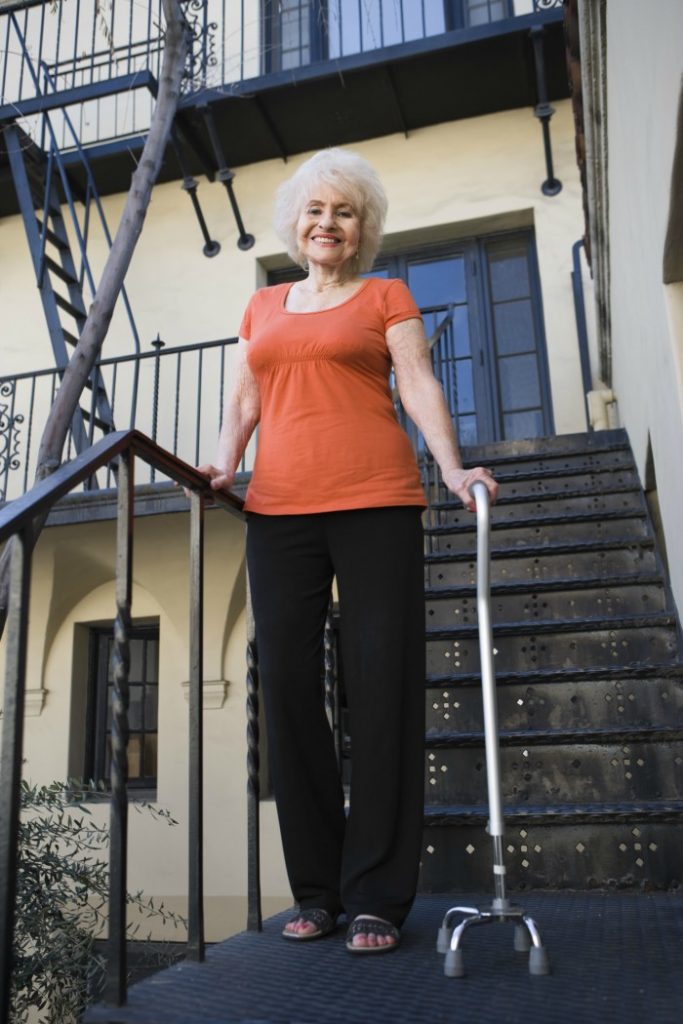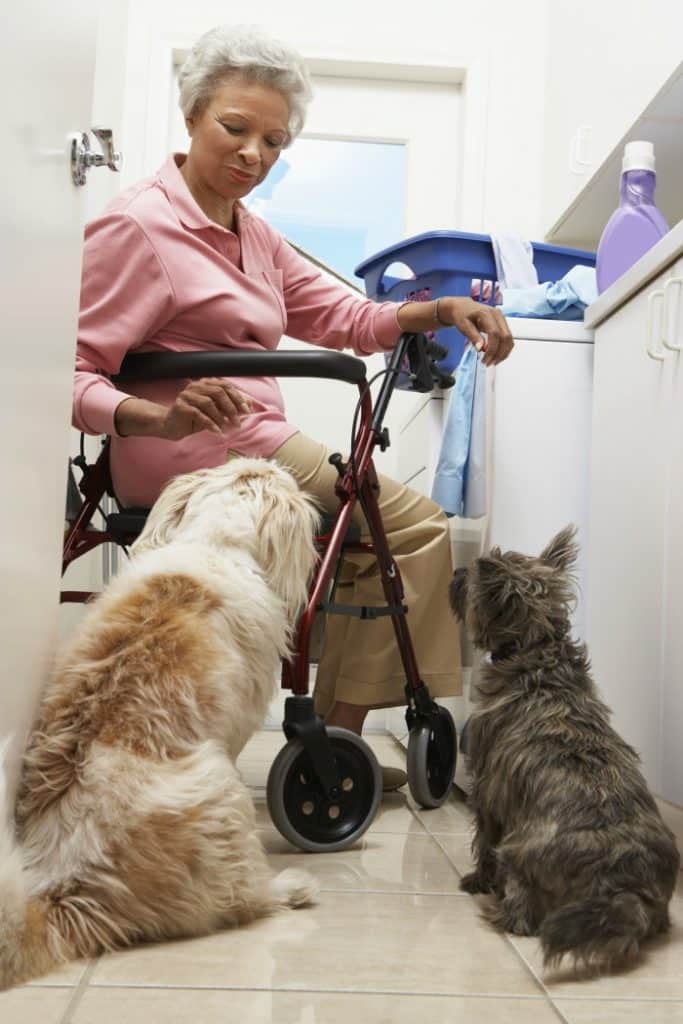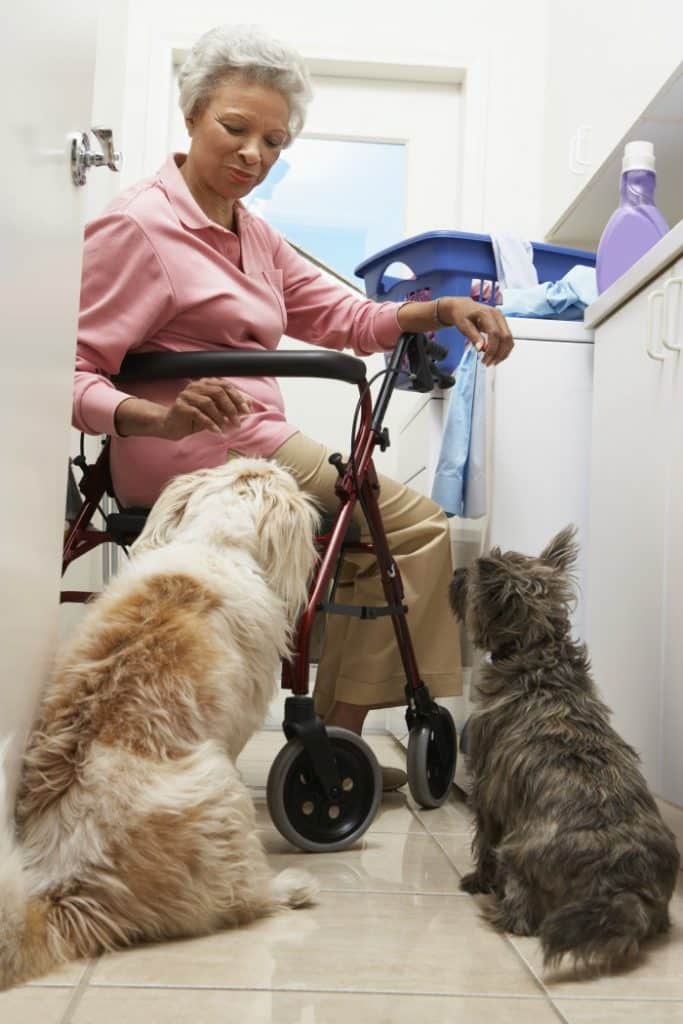Arthritis causes pain, swelling, stiffness, and joint tenderness as the joints become inflamed. Depending on the severity of your symptoms, you can experience mild to extreme pain. A person with arthritis often looks normal and they often do their best to mask the pain that they feel on a daily basis. It is considered an invisible illness and most people who haven’t experienced it don’t understand how painful it can be. Also, the symptoms can vary from day to day and even change as the day goes on. There are a ton of factors that influence the symptoms of your arthritis including the weather, illness, overuse, etc.
Disclosure: This post is for informational purposes only. All opinions are my own and I have used these techniques personally to cope with my rheumatoid arthritis pain.
There are two different types of arthritis: osteoarthritis and rheumatoid arthritis. My goal is to educate you on the differences between the two different types. I will also include some of my own personal favorite home remedies that have helped me over the years since I was diagnosed with rheumatoid arthritis.
Osteoarthritis
Osteoarthritis is a common type of arthritis that involves wear and tear on the cartilage in your joints. The cartilage acts as a protective cushioning between your joints. As you age, this cushioning slowly degenerates and begins to wear out. Worn out cartilage causes your bones to rub together and is typically painful. This type of damage occurs naturally as you age or due to an injury or an infection in the joint.
The main difference between osteoarthritis and rheumatoid arthritis, osteoarthritis typically affects one joint and doesn’t cause problems in multiple joints. Depending on the severity of damage to the cartilage in the affected joint, it is possible that you might encounter joint deformity, structural changes. Lastly, the damage can be seen using x-rays or other imaging, decreased range of motion, joint stiffness, pain, or swelling.

Rheumatoid Arthritis
Rheumatoid arthritis is an autoimmune disorder, and it causes chronic inflammation in multiple joints. The disease causes the synovium to thicken and fill with fluid. The thickened synovium can cause the cartilage to degenerate as well. The fluid causes your joints to swell. Constant swelling eventually causes the tendons and ligaments to stretch and weaken. When the tendons and ligaments are no longer supporting the joint properly, you will begin to notice signs of joint deformity.
People often tend to see signs of the disease in the smaller joints first such as the hands, feet, wrist, elbows. During the early stages of rheumatoid arthritis, you may notice redness or swelling in your joints. However, some patients usually notice pain, increased stiffness especially in the morning, and tenderness. If you notice joint pain in multiple joints, you should be examined by a doctor to rule out rheumatoid arthritis or other major health problems.
Arthritis in your hands, wrists, feet, and elbows tend to get noticed first and send people running to the doctor. These joints are used when you are completing your daily activities. Overuse, abuse, and aging can cause arthritis, and it often leads to severe pain, swelling, stiffness, and decreased range of motion. The intensity of your symptoms can vary and can change throughout the day.
Home Remedies For Arthritis
Many people often attempt to treat their ailments at home until it becomes a huge problem. But if you have either form of arthritis, it is important to get to the doctor for an examination and lab work to look for the signs and symptoms at home. While waiting to see a doctor or between treatments, home remedies for arthritis can be beneficial. However, if you are experiencing a huge flare, pain that feels different, or have additional symptoms we suggest seeing your doctor as soon as possible. Arthritis symptoms can be tricky to treat but treatment can help slow down the destruction and damage to your joints.
Moist Heat Therapy
Joint stiffness is often worse first thing in the morning and can last for several hours depending on the severity of your arthritis. Using heat therapy can be used to help warm up your joints before getting out of the bed in the morning. Heat therapy also helps improve blood circulation, eases stiff joints, and can improve your range of motion.
We suggest using moist heat vs using a heating pad on swollen, painful joints. Many people who suffer from arthritis can also benefit from taking a warm shower shortly after waking up, placing a warm towel over the joint, or using a moist heat pack (you can even make your own). Use exercise extreme caution when using moist heat on your joints. A heating pack that is too hot can burn you and could potentially lead to an infection. It is also safe to use moist heat several times a day to relieve stiff and painful joints.

Ice
Placing an ice pack on painful and swollen joints can help reduce the symptoms by decreasing pain and swelling. I suggest placing a covered ice pack directly over the affected joint. Never put ice directly on the skin. Putting ice directly on the skin can cause frostbite.
Do push past the initial reaction to remove it and keep the ice in place for 15 minutes. Leaving the ice on will allow the ice to penetrate the joint for maximum effectiveness. It is safe to use ice several times a day to help keep pain and swelling at bay. Using ice therapy is an effective way to ease arthritis symptoms. Ice can also help reduce muscle spams around your larger joints.
Physical Therapy
Whether you have osteoarthritis or rheumatoid arthritis, it is important to keep moving as much as possible. Many people tend to avoid certain activity or movements that increase pain. Over time skipping these activities can cause additional joint stiffness, increased pain, reduced range of motion, weak muscles, or further injury from falls.
A physical therapist is trained to help people with arthritis problems by creating a strength training program that is designed to help improve joint stiffness and weak muscles. Their job is to teach you gentle exercises to target your problem areas. A therapist will also teach you how to perform daily activities without straining your joints or hurting yourself.
Compression Sleeves
I’ve purchased several different compression sleeves to fit on various joints in my body. My pain moves around my body and I have to treat each joint as it pops up. For example, this week it is my right hip, elbow, wrist, and shoulder. My elbow hurts so bad that I can’t even pick up a cup of water without it hurting and my wrist hurts to type or hold my cell phone. Compression sleeves can also be used for osteoarthritis. Again, they do help apply pressure and can help keep your joint stable.
Rheumatoid arthritis can make multiple joints hurt at the same time, or it can move around from joint to joint. Most of the time, I feel it in the smaller joints in my fingers, ankles, elbows, or feet but I also feel it in my large joints too. Depending on the affected joint, sometimes my joints will swell and becomes super painful, and other times I don’t notice it. Medication only goes so far when it comes to managing the painful symptoms of rheumatoid arthritis. In my case, medication only reduces the pain a small amount and never makes it go away completely. When my rheumatoid arthritis pain is unbearable, and the medication isn’t helping, I start using these alternative ways to cope with arthritis pain or I’ll go see my doctor for a round of steroids.
A neoprene compression sleeve is a safe and effective home remedy for treating rheumatoid arthritis or osteoarthritis. The compression sleeve simply slides over your affected joint to help give you added support. Plus, I noticed that the firmness and added warmth of using a compression sleeve can comfort my swollen and painful joints. The light compression helps reduce swelling and inflammation and helps keep your joints warm. Don’t be fooled by copper infused compression sleeves, gloves, and apparel it isn’t a miracle drug or a replacement for surgery. However, they can be used as a tool in your toolbox to help you manage your arthritis symptoms.

Topical Analgesics
People who suffer from either form of arthritis will tell you that they have to constantly deal with break thru pain and have to to find some other way to cope with their arthritis symptoms. Topical analgesics are designed to help relieve sore joints and painful arthritis symptoms temporarily. If you plan on using this topical analgesic, make sure that you follow the directions on the bottle.
Don’t want to use a ton of chemicals on your skin; you can even make your homemade rub using coconut oil and essential oils such as peppermint, wintergreen, spearmint, or eucalyptus. Before using essential oils on your skin, it is important that you understand how to properly use essential oils. Or you can purchase Deep Blue by DoTerra here.
Therapy
Don’t be afraid to seek help from a licensed counselor. Talking about your pain with a therapist can be super helpful. They can work with you on how to cope with your disability and chronic pain. Therapy has been super beneficial for me when it comes to managing my arthritis symptoms.
Being in constant pain can also make you cranky and affect your relationships too. Your spouse or significant other may not fully understand what it is like to be in constant pain.
Speak to a Pain Psychiatrist

Dealing with constant pain can affect everything going on in your life. One of my doctors just put in a referral for me to see a pain psychiatrist. They specialize in helping those affected by chronic pain. Chronic pain can be very isolating especially as your arthritis symptoms progress and you are forced to quit your job or scale back your social life. This has happened to me and it gets very lonely. It’s tough when you aren’t around someone who gets what it is like being in constant pain. And when you have a significant other who still sees you as normal, it can be very difficult for them to understand or they don’t want to understand. Unfortunately, the divorce rate with a spouse with chronic pain is as high as 75%.
Find a Support Group
When you are stuck in a rut with chronic arthritis pain, it can be very overwhelming and a lonely feeling. Chronic pain from arthritis can lead to depression or anxiety. Support groups are an excellent way to find support and even possibly new friendships. On the other hand, it is comforting to know that you aren’t alone in your suffering.
Lose Weight if Your Able To
Excessive weight adds additional stress and wear n tear on your joints. Reducing your weight can help improve mobility, decrease pain, and prevent further joint damage or injury. It is tough to lose weight while taking certain medications but it is worth making an effort. Any weight loss can make a huge difference in your joint health.
Massage
According to the Arthritis Foundation, massage can be beneficial for those who have arthritis. A massage therapist needs to be specially trained to give massages to people who have arthritis. Your doctor can usually refer you to a physical therapy clinic that offers massages. The therapist will be able to work on specific joints that are bothering you and help relieve tense muscles.
Pain from arthritis can range from mild to debilitating. Patients with pain tend to seek home remedies to ease arthritis symptoms before heading to the doctor for a proper diagnosis. Arthritis pain isn’t normal, and there are things that doctors can do in addition to these home remedies to ease arthritis symptoms.








